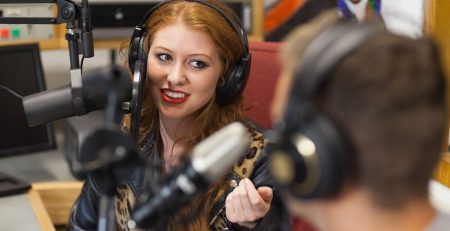What Studios and How Are Netflix Dubbings Made?
Netflix is by far one of the most popular creators of recent times. Netflix viewing rate in the world almost competes with television viewing rate. Moreover, this platform also opens an option as Netflix dubbing to the audience and produces very good dubbing. Content such as TV series, movies and documentaries that have just joined the platform are offered to the audience with the option of subtitles or dubbing in Turkey as well as in the world.
As a result, the platform analyzes whether users' content is mostly watched with subtitles or dubbed, by getting feedback from user behaviors. This analysis gives the platform advantages such as priority and investment when creating content. Different on Netflix Turkey dubbing studios working with. Depending on the popularity of the content, maybe even dubbing is not among the options. All Netflix dubbing is done in dubbing studios in Istanbul. So how does the process work? How do Netflix dubbing studios work?
First Stage for Netflix Dubbing: Translation-Subtitle
First of all, the foreign productions on Netflix are translated by professional translators. Subtitles are applied following time code synchronization based on translation to the contents. While translating, care is taken not to affect the speech jargon by adhering to the speaking times of the characters.
Stage Two for Netflix Dubbing: Redaction
No matter how much attention is paid to the speaking times while translating the contents, there may be time conflicts due to foreign language grammatical structure and word counts during dubbing. Redaction equalizes the character's speaking time with the dubbing text. As a result of editing, the translated text turns into a dubbing text. The dubbing text is now tailored to the grammatical structure and speaking time of the characters.
Stage Three for Netflix Dubbing: Creating a Dubbing Cast
casting director It examines the content to be dubbed and creates a cast among the microphone players according to the characteristics of the characters in the content. While creating the cast, matches are made in accordance with the age, gender and role of the characters. Then, voices are taken from microphone actors under the name of audition, accompanied by casting and dubbing directors. The purpose of this experiment is to observe whether the voice is suitable for the character.
Stage Four for Netflix Dubbing: Dubbing
After translation and subtitles, the last step is dubbing. Each dubbing artist related to the project is given a separate appointment by the studio. Dubbing artists come to the recording studio to talk about their characters. More than one person can be in the studio at the same time, while only rabarba (crowded ambient sounds) is performed. Rabab In exceptional cases, all character speakers speak their own characters in separate content. Previously, all the character speakers were present in the dubbing studios at the time of TRT. With the development of technology, taking individual records contributed to time savings.
Netflix works with dubbing studios in various countries to provide its audiences around the world with dubbed content in different languages. Depending on the language and country Netflix prefers to dub a TV show or movie, it may make deals with different studios.
Does Netflix Dub All Its Content?
Netflix dubs many of its content in different languages. However, some content is presented in its original language and translated into different languages with subtitles only. Also, dubbing in a specific language is not possible due to marketing strategies or language options in some countries. So why doesn't Netflix dub all of its content?
Netflix strives to offer the most comprehensive language options possible, but it's not possible to dub every content. The reasons for this may be:
- Financial Matters: Dubbing a content into all languages is a very costly process. Netflix dubs when it can afford the cost and suits the audience's demand.
- Audience Interest: Where a content is more popular in a particular country or language, Netflix targets that language and dubs their content more.
- Viewer's Choice: Some viewers may prefer to watch in the original language or with subtitles only. Therefore, Netflix offers different options for all their content rather than dubbing.
- Type of Content: Certain types of content may lose the meaning of dubbing or are better viewed with subtitles. For example, documentaries are often presented in their original language and translated only with subtitles.
As a result, Netflix dubs many of its content in different languages, but in some cases it is not possible to dub all of its content. Dubbing is the choice of the viewer when the child is, and therefore Netflix sets the broadcasting principles based on the reaction and preference of the viewers.






















